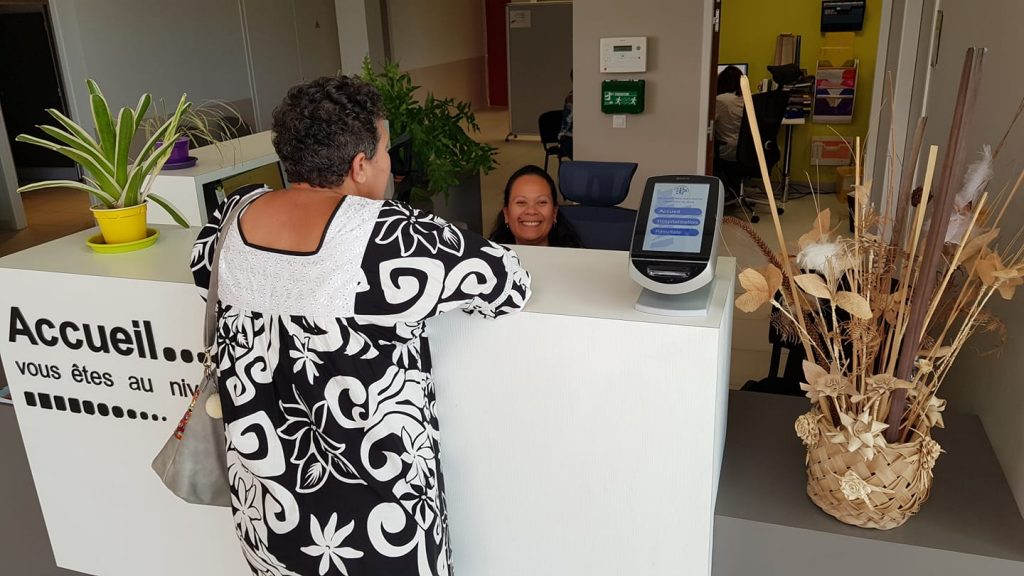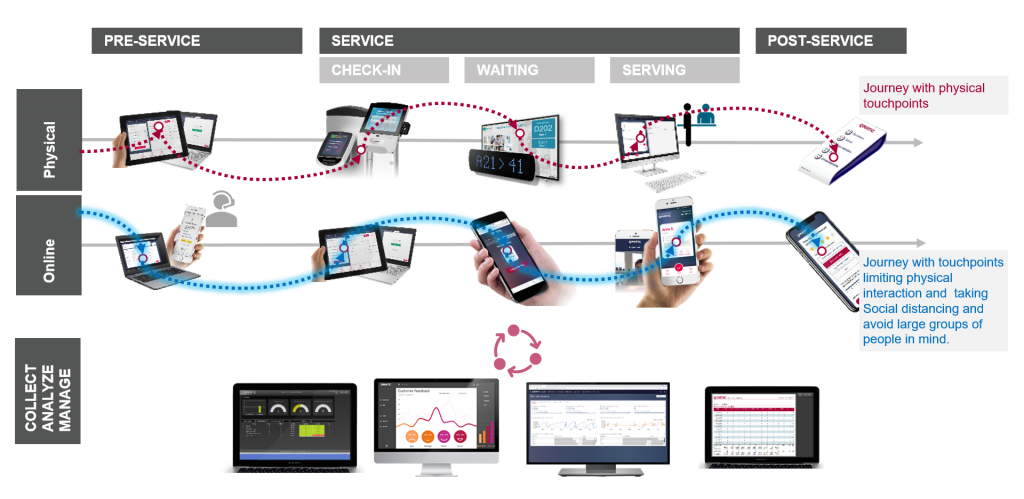La situation actuelle concernant COVID-19 nous oblige tous à prendre des mesures de précaution et à pratiquer la « distanciation sociale » (1,5 m) pour réduire le risque d’infection. Pour les entreprises, cela pose quelques défis. Certains services doivent rester disponibles pour répondre aux besoins des clients. Dans le même temps, la priorité absolue est de protéger vos clients et votre personnel contre la propagation du virus, tout en vous assurant que vous pouvez continuer à fournir les services requis avec une disponibilité du personnel plus dynamique que d’habitude.
Dans des moments comme ceux-ci, il est important que les hôpitaux, les agences gouvernementales et les entreprises s’adaptent rapidement pour faire face à cette situation. Comment pouvez-vous continuer à fournir un service tout en minimisant les risques pour les clients et le personnel? Voici quelques façons de vous aider à y parvenir.
Limitez le nombre de personnes visitant vos locaux
Minimiser la foule dans la salle d’attente est la première étape vers la réduction du risque. Cela peut être réalisé en adoptant une ou toutes les approches suivantes:
Passer à la file d’attente virtuelle
Cela permet aux clients d’attendre dans d’autres endroits moins fréquentés, par exemple à l’extérieur ou dans leur voiture, réduisant ainsi le nombre de personnes dans votre salle d’attente.
Passer à une politique de rendez-vous uniquement
Avec la prise de rendez-vous, les clients peuvent planifier leur arrivée près de leur heure de rendez-vous, ce qui peut réduire considérablement leur temps d’attente et éviter d’encombrer votre salle d’attente. Cela permettra également de réduire, voire d’éliminer, les entrées et les foules imprévues. C’est le choix fait par le fournisseur d’accès CAN’L.
Utilisez un(e) réceptionniste comme alternative au distributeur en « self service »

À l’entrée, vous pouvez affecter un membre du personnel à la fonction de réceptionniste dédié à l’accueil. Ainsi l’agent imprime le ticket sans que le visiteur n’ai besoin de toucher le distributeur. C’est ainsi que fonctionne le PSN de Koné.
Il possible d’aller plus loin en envoyant pas SMS le lien qui permet au patient de visualiser sur son smartphone son ticket virtuel et ainsi d’attendre dans un autre endroit qu’une salle d’attente bondée.
Limitez au minimum les interactions / points de contact étroits
Dans la mesure du possible, remplacez les interactions physiques et les points de contact par des solutions numériques. Voici quelques points de contact qui peuvent être facilement déplacés vers des alternatives numériques:
- Réservation : Fournissez une réservation de rendez-vous en ligne sur votre site Web ou ouvrez un centre d’appels où un membre du personnel désigné peut prendre des rendez-vous pour les clients. Assurez-vous d’activer toutes les options possibles pour faire les choses virtuellement.
- Enregistrement : pour faciliter l’enregistrement virtuel, vous pouvez émettre des codes QR que les clients peuvent scanner pour accéder à la file d’attente virtuelle, soit en ligne, soit à distance du local (sur la porte ou la fenêtre, par exemple) pour minimiser interactions étroites
- Attente : en lien avec la section précédente, la file d’attente virtuelle permettra à vos clients de réduire au minimum les interactions étroites en leur permettant d’attendre ailleurs en dehors de votre hall ou de votre zone d’attente. Utilisez les notifications des clients pour les tenir informés en attendant ailleurs.

Gérer le flux client et l’allocation du personnel
L’un des avantages de la mise en œuvre d’une politique de réservation uniquement est la possibilité de gérer le flux client. Comme vous pouvez décider du nombre de créneaux de rendez-vous dont vous disposerez, cela vous permet de contrôler le nombre de visiteurs sur site à tout moment. Avec cela, vous pouvez également affecter votre personnel en fonction de leur disponibilité et des demandes des clients.
La surveillance est un élément crucial lors de la mise en œuvre de la mise en file d’attente virtuelle , car il peut être difficile de se faire une idée du nombre de personnes qui attendent d’être servies d’un simple coup d’œil dans la salle d’attente. Mais avec des outils de renseignement comme un panneau des opérations, cela peut facilement être résolu. Le panneau de commande fournit des données telles que le nombre de clients en attente, les compteurs ouverts et la disponibilité du personnel, qui sont tous utiles pour l’allocation des ressources.
Fournissez une communication claire pour vos clients et votre personnel
Pour garantir une expérience client transparente, il est important que les clients reçoivent des informations avant, pendant et après leur visite. Même lorsqu’ils ne sont pas sur place, utilisez les notifications par e-mail et / ou SMS pour les tenir à jour avec les confirmations de réservation, les rappels, les temps d’attente prévus ou tout changement. Vous pouvez également fournir des informations sur ce à quoi vous attendre sur votre site (par exemple, si vous vérifiez la température à l’entrée ou si votre personnel porte des masques de protection).
De même, fournir des informations à votre personnel peut réduire le stress pour lui. Communiquez les événements et les changements tout au long de la journée afin qu’ils soient aussi préparés que possible.
Faire de la « distanciation sociale » et continuer à fournir des services dans les hôpitaux, les bureaux des administrations ou d’autres secteurs d’activité n’est pas impossible. Le passage à des solutions mobiles peut réduire considérablement le risque d’infection dans votre zone d’attente, et donc protéger à la fois vos clients et votre personnel contre le risque de propagation de l’infection, tout en fournissant des services avec une grande satisfaction client.
Si vous souhaitez en savoir plus sur la mise en œuvre de la mise en file d’attente virtuelle pour votre organisation, contactez-nous et nous vous aiderons à créer des parcours client sécurisés.
